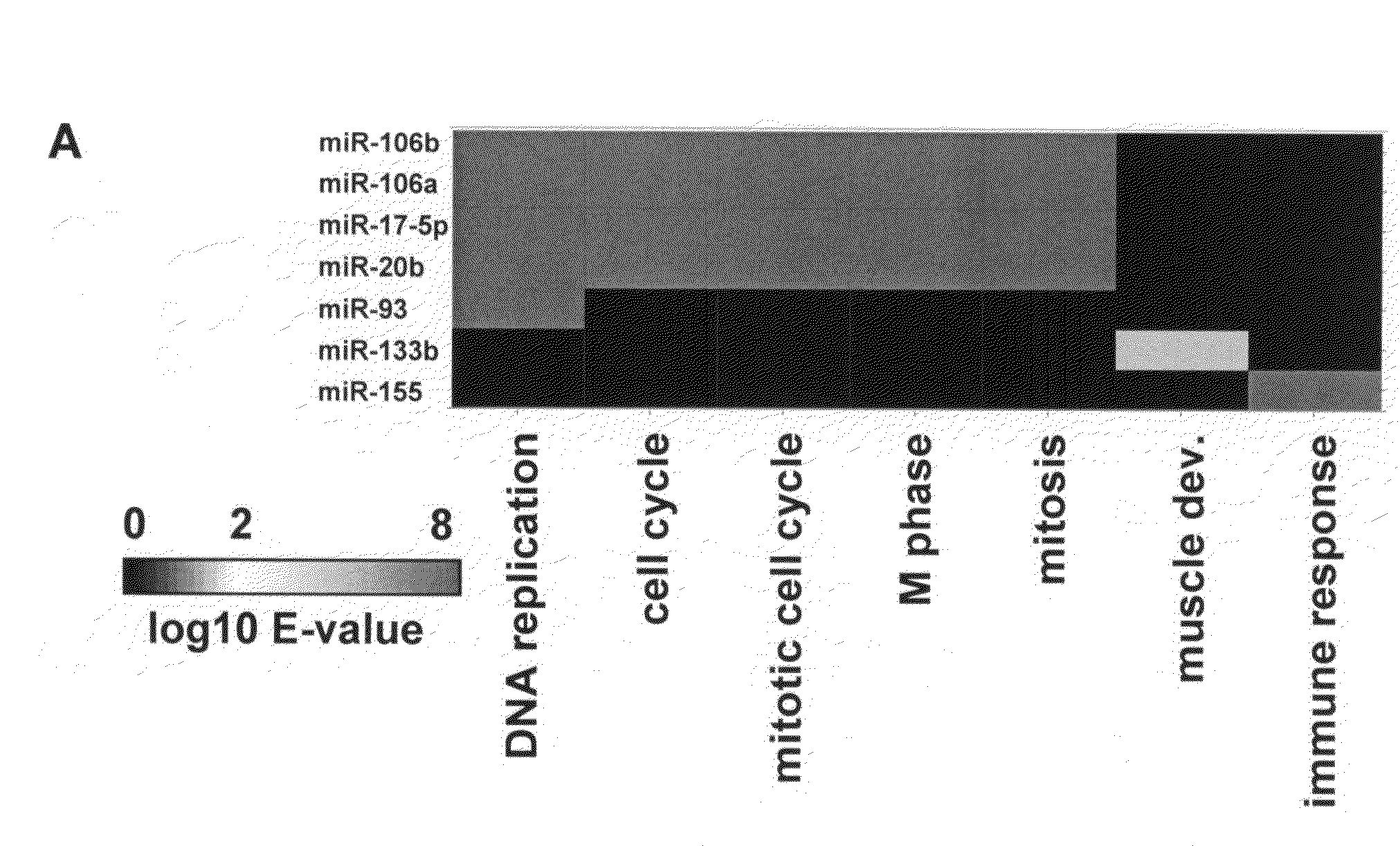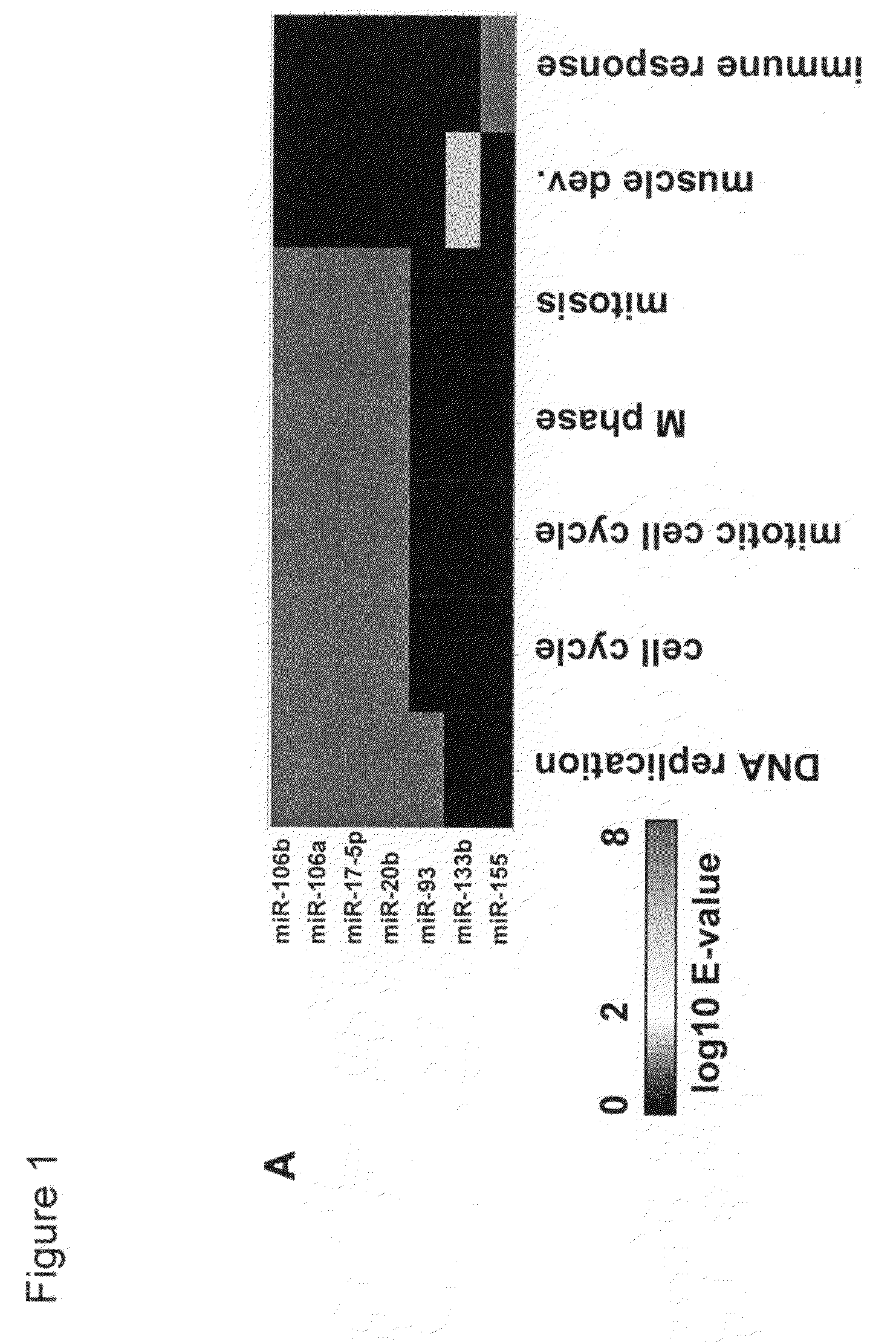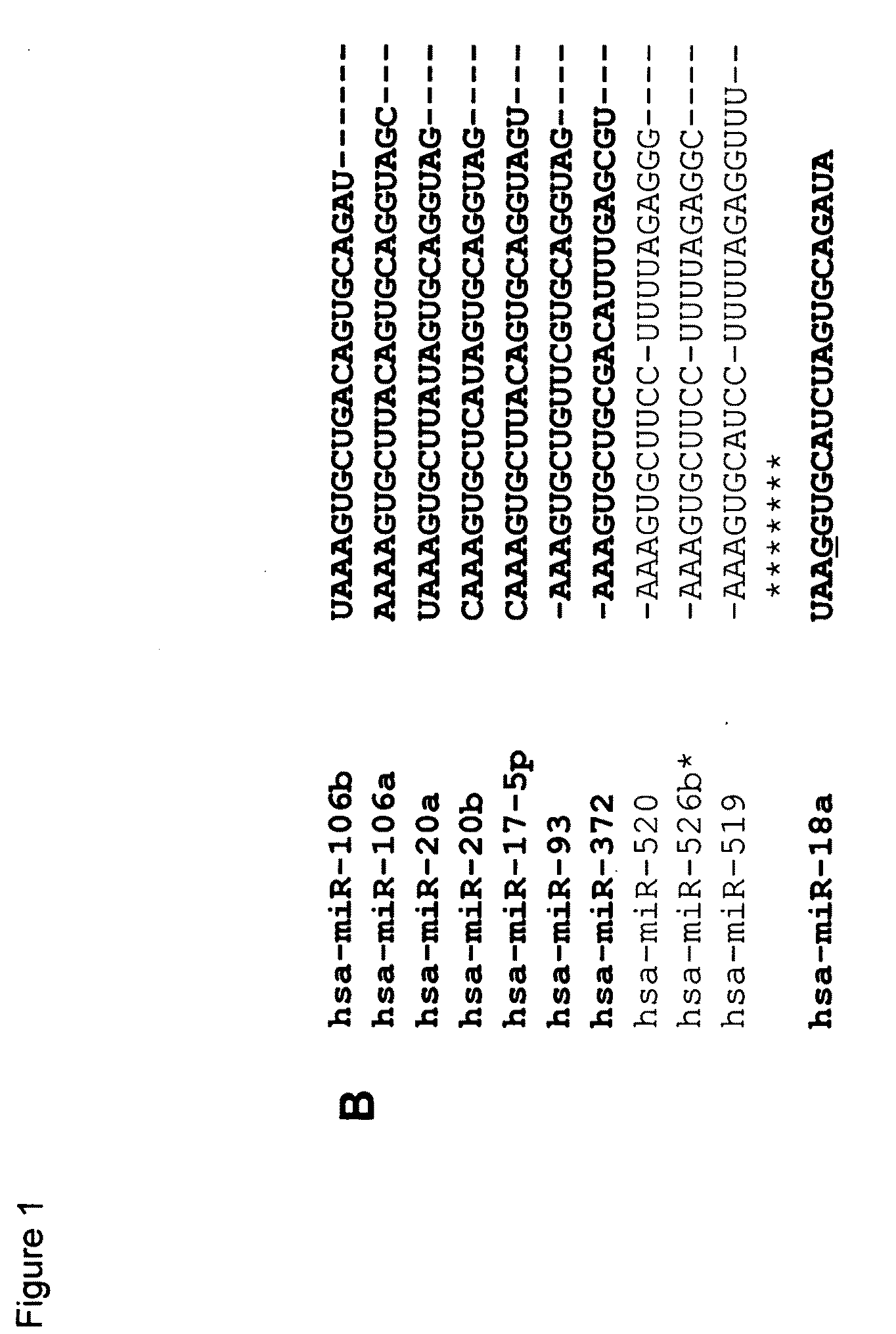Methods and compositions for regulating cell cycle progression via the miR-106B family
a cell cycle and mir106b technology, applied in the field of mirnas, can solve the problems of insufficient knowledge regarding the target site of mirna and the determination of microrna functions, relatively few experimental validations, computational methods are not optimal for predicting mirna target sites, etc., and achieve the effect of induling apoptosis
- Summary
- Abstract
- Description
- Claims
- Application Information
AI Technical Summary
Benefits of technology
Problems solved by technology
Method used
Image
Examples
example 1
miR-106b Correlates with Cell Cycle Annotation and is Overexpressed in Tumor Samples
[0220]A number of miRNAs were functionally classified by correlating their expression levels in a set of human tumor and adjacent normal tissue samples with the expression of mRNA transcripts. The correlated mRNA transcripts were annotated with Gene Ontology (G0) Biological Processes terms (Ashburner et al., 2000, Nat. Genet. 25:25-29). Transcripts whose expression in vivo is correlated with expression of individual miRNAs may be enriched for transcripts characteristic of pathways regulated by the miRNAs.
[0221]FIG. 1A depicts a heat map of the expectation (E-value) for enrichment for G0 Biological Process terms in sets of transcripts that were positively correlated with the given miRNAs. Several miRNAs with known functions were correlated with transcripts with the expected annotation. miR-133b (and miR-1 and miR-133a, data not shown) levels correlated with transcripts annotated as being associated wi...
example 2
miR-106b Affects Cell Cycle Progression
[0224]To directly test whether the miR-106b family accelerates cell cycle progression, we performed gain-of-function or loss-of-function experiments. Synthetic RNA duplexes, designed to mimic the miRNAs, or anti-miRs, to inhibit the microRNAs, were transfected into asynchronously-growing cells. As shown in FIG. 2A.1, a miR-106 duplex promoted cell division compared with a control duplex, whereas anti-miR-106b retarded cell division.
[0225]Cell cycle profiles were analyzed by flow cytometry. Overexpression of miR-106b, miR-106a, miR-20b and miR-17-5p resulted in an increase in the S phase population as measured by propidium iodide staining (data not shown) and BrdU incorporation (FIG. 2A.2). Following a one hour pulse of BrdU, control-treated cells had 17.7% of cells in S phase, whereas miR-106b- and miR-106a-treated cultures had 31.8% and 31.0% S-phase cells, respectively. No increase in the S-phase population was observed with miR-93 and miR-37...
example 3
Anti-miR-106b Slows Cell Cycle Progression by Targeting Multiple Family Members
[0229]Acceleration of cell cycle progression by the miR-106b family may reflect the intrinsic function of the miRNAs, or an ectopic gain-of-function as a result of non-physiological levels. To identify the cellular function of the miR-106b family, we used LNA-conjugated anti-miRs to suppress the endogenous miRNAs.
[0230]If the miR-106b family is required for progression from G1 to S, then a decrease of mature miRNA levels will result in slower cell cycle progression and in accumulation of cells in G1. We found that anti-miR-106b (SEQ ID NO:9), anti-miR-106a (SEQ ID NO:10), anti-miR-20b (SEQ ID NO:12), and anti-miR-17-5p (SEQ ID NO:13) had the reverse effect from the miRNA overexpressions and resulted in an accumulation of cells in G1 (2N) upon treatment with nocodazole (FIG. 2B, bottom panels). Even after prolonged exposure to nocodazole (72 hr), a subpopulation of ˜20% of cells remained blocked in G1 (2N)...
PUM
| Property | Measurement | Unit |
|---|---|---|
| Fraction | aaaaa | aaaaa |
| Fraction | aaaaa | aaaaa |
| Fraction | aaaaa | aaaaa |
Abstract
Description
Claims
Application Information
 Login to View More
Login to View More - R&D
- Intellectual Property
- Life Sciences
- Materials
- Tech Scout
- Unparalleled Data Quality
- Higher Quality Content
- 60% Fewer Hallucinations
Browse by: Latest US Patents, China's latest patents, Technical Efficacy Thesaurus, Application Domain, Technology Topic, Popular Technical Reports.
© 2025 PatSnap. All rights reserved.Legal|Privacy policy|Modern Slavery Act Transparency Statement|Sitemap|About US| Contact US: help@patsnap.com



